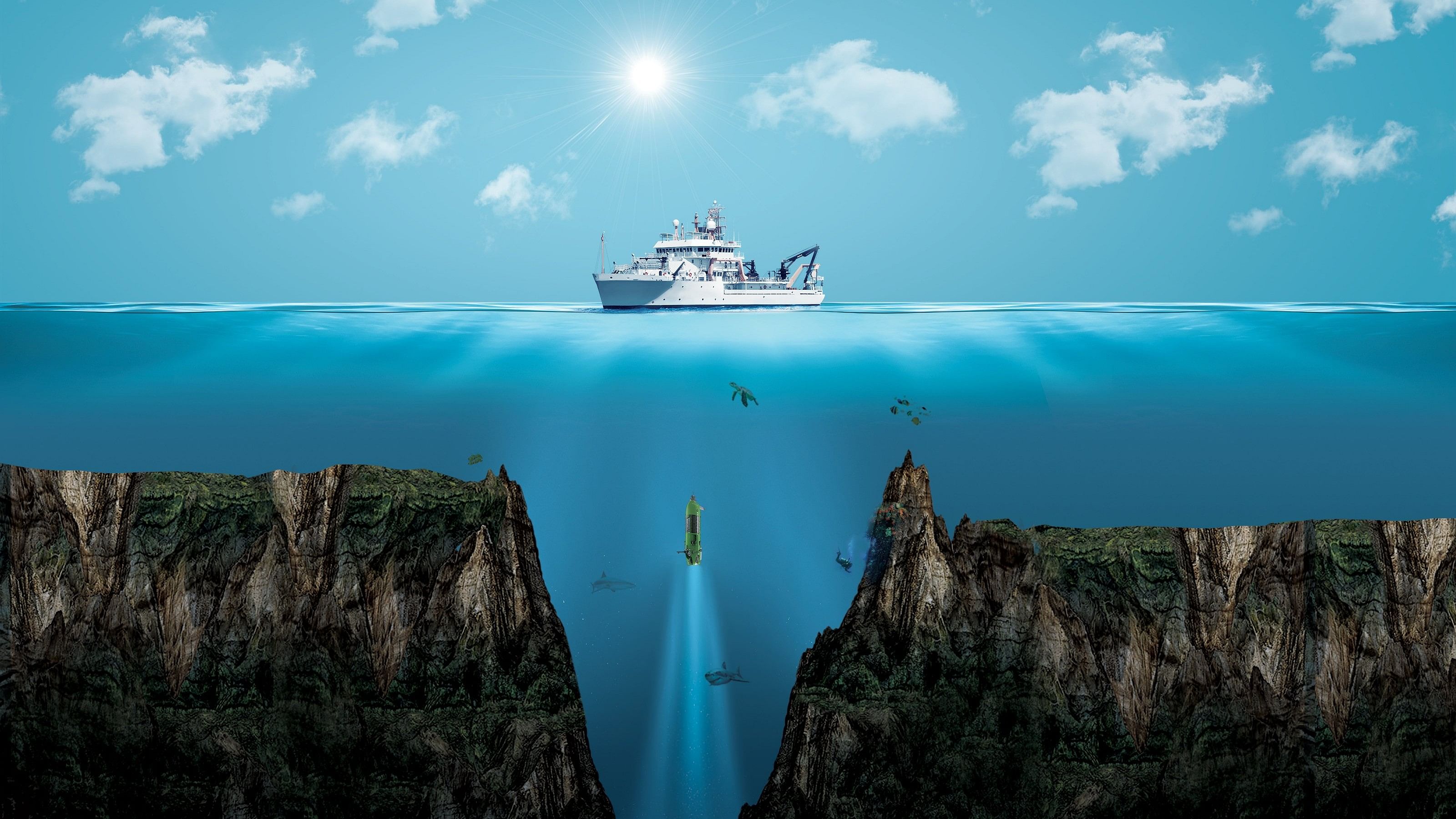
Mariana Trench. the deepest point of the earth.
I often have a problem with the word ‘awesome’ as it’s used today. I’m a bit finicky about it meaning something that is ‘extremely impressive or daunting; inspiring awe’. (It’s NOT a synonym for ‘good’ or ‘well done’!) However, there are some sights that are truly awesome.
Have you stood on the beach and looked out at the sea? Watched the waves rise up and dash against the rocks? That sight, for me, is awesome. No wonder Poseidon was one of the three major Greek Gods. And no wonder that people toss coins into the sea as they leave port as a toll to the Sea God to bring them safely home. After all, there I was quietly standing on the shore the other day and admiring the view when whoosh a rogue wave rolled up and soaked me!
Not only does the ocean contain most of the earth’s water but it also covers about 99% of the living space on our planet. Yes, it covers 71% of the surface but you have to also consider the depth (upto 10 kms in some places). The bottom of the ocean has ridges, trenches, plateaus, and canyons. When the tectonic plates move apart and move closer together, molten magma rises. All this geological activity makes for the production of about 37 of the essential minerals that we need to survive. Tsunamis are caused by large and sudden displacements of the ocean. Large earthquakes below or near the ocean floor are the most common cause but it could also be an underwater earthquake or a landslide. Did you know that the tallest waterfall is actually in the ocean? It’s called the Denmark Strait cataract, located between Greenland and Iceland, and drops 3,500 m. The tallest land-based waterfall is less than 1,000 m. We still don’t know very much about all the various life forms that could be living in those depths. Though we don’t have an absolute number, the ocean is believed to be home to 15% of all living creatures on this planet.
It seems strange that we seem to know more about Mars and the moon than we do about this body of water so much closer to home. 12 people have gone to the moon but only 3 have been to the deepest part of the ocean — the Mariana trench. (One of those is the filmmaker James Cameron who made the movie ‘Titanic’.) A major reason for the inaccessibility of the ocean depths is the massive pressure of the water, making exploration difficult and expensive. Only 10% of the ocean has been mapped.
This mysterious, unknowable, ever-changing body of water is the virtual heart of our planet. Its currents circulate heat and water around the globe and influence the climate. The planet’s health depends on our taking care of her ‘heart’. The ocean absorbs about a third of all carbon dioxide produced on Earth and stores 50 times more carbon dioxide than the atmosphere.
During the Ice age (around 11,000 to 1,15,000 years ago) the seas were much lower, about 400 feet lower than they are today. Huge swathes of the planet were covered with sheets of ice. The earth was drier. Dry grassy plains, were common. So were deserts. This made animal migration possible. Bears, caribou and wolves roamed the earth as did mammoths and mastodons which went extinct at the end of the ice age. Humans emerged about 300,000 years ago and imagine, they could walk from one continent to another too! But then the ice melted, the oceans grew in size and volume, and continents were formed. Five distinct oceans emerged — the Atlantic Ocean, the Indian Ocean, the Arctic Ocean, the Antarctic Ocean (also known as the Southern Ocean) and the biggest and deepest of all — the Pacific Ocean that covers approximately 63 million square miles, contains more than half of the free water on Earth and could fit all the continents into it!
Think of the symbolic significance of Gandhiji’s Dandi march. It made a point to our colonial masters that it was the height of injustice to tax us on a commodity so plentiful and so easily available. Not only can all the salt in the ocean cover the whole earth but it can cover it up to the height of a 40-storey building!
Most of the plastic we use ends up in the ocean endangering the lives of sea creatures. Can we reuse and recycle more? Approximately 3 billion people depend on the ocean to make a living. Coral reefs are not only beautiful but are home to a quarter of all marine life. They are some of the most biologically diverse ecosystems on the planet. They provide food, protection, income, and new medicines to the human race. Seaweed, algae and tiny ocean phytoplankton produce about half of all atmospheric oxygen. But about 60% of the world’s coral reefs are either dead or dying. Today, scientists are working on transplanting coral reefs where necessary and protecting them. In many parts of the world, policy makers have begun to worry not only about poaching on land but poaching animals in the sea too making many creatures ‘protected’ animals.
The world’s oceans are as vital to the planet as our hearts are to us. So, let’s help it stay healthy.